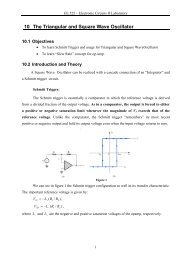
Surface-mount capacitors in aluminum, ceramic and tantalum and leaded capacitors in ceramic and tantalum Power Magnetics, RF Inductors, EMI / RFI Filters, Broadband Magneticsĭiodes, Switch-mode MOSFETs, HF / VHF Linear MOSFETs, MOSFET Driver ICsįiber Optics, Microcontrollers, Power Semiconductors, Small Signal Discretes Some of the most popular sources to check out for SPICE models includes: VendorĪmplifiers and Comparators, Analog to Digital Converters, Digital to Analog Converters, Embedded Processing & DSP, MEMS and Sensors, RF/IF Components, Switches/Multiplexers, Analog Microcontrollers, Interface, Power and Thermal Management Thankfully there are plenty of component manufacturer who provides SPICE models to download on their website. Unless you plan to use a library in EAGLE that already has spice compatible parts, then you’ll need to download SPICE models yourself. Complex multi-part components will often have models with hundreds of lines of information. Models for simple components can be simple one-line descriptions. Models contain text descriptions of a component’s values, which can then be used by the SPICE engine to simulate behavior mathematically.Ī SPICE model for a varactor diode and all of its values. The netlist defines how pins are connected on your schematic.

SPICE simulation makes this happen through the use of SPICE models and a netlist. Why bother with simulating though? By testing how a circuit will perform in action, you can catch errors early in the design process before they manifest in your prototypes.

It’s one of the most widely used simulation programs that allows engineers to simulate the behavior of circuits. SPICE is a computer simulation developed at the University of California, Berkeley.

In this blog, we’ll be looking at what SPICE simulation is for the beginner and how to run your first EAGLE integrated simulation.

Whether you’re a student or professional, SPICE will allow you to predict the behavior of your electronic circuits accurately. SPICE simulation is here! Autodesk EAGLE 8.4 brings SPICE in-house, allowing you to design and simulate in the same tool. SPICE Simulation Part 1: The Basics of SPICE and How It’s Integrated into Autodesk EAGLE


 0 kommentar(er)
0 kommentar(er)
